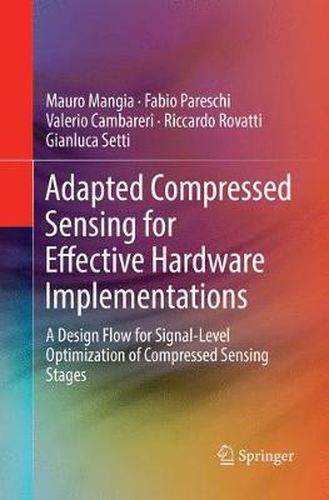Readings Newsletter
Become a Readings Member to make your shopping experience even easier.
Sign in or sign up for free!
You’re not far away from qualifying for FREE standard shipping within Australia
You’ve qualified for FREE standard shipping within Australia
The cart is loading…






This book describes algorithmic methods and hardware implementations that aim to help realize the promise of Compressed Sensing (CS), namely the ability to reconstruct high-dimensional signals from a properly chosen low-dimensional portrait . The authors describe a design flow and some low-resource physical realizations of sensing systems based on CS. They highlight the pros and cons of several design choices from a pragmatic point of view, and show how a lightweight and mild but effective form of adaptation to the target signals can be the key to consistent resource saving. The basic principle of the devised design flow can be applied to almost any CS-based sensing system, including analog-to-information converters, and has been proven to fit an extremely diverse set of applications. Many practical aspects required to put a CS-based sensing system to work are also addressed, including saturation, quantization, and leakage phenomena.
$9.00 standard shipping within Australia
FREE standard shipping within Australia for orders over $100.00
Express & International shipping calculated at checkout
This book describes algorithmic methods and hardware implementations that aim to help realize the promise of Compressed Sensing (CS), namely the ability to reconstruct high-dimensional signals from a properly chosen low-dimensional portrait . The authors describe a design flow and some low-resource physical realizations of sensing systems based on CS. They highlight the pros and cons of several design choices from a pragmatic point of view, and show how a lightweight and mild but effective form of adaptation to the target signals can be the key to consistent resource saving. The basic principle of the devised design flow can be applied to almost any CS-based sensing system, including analog-to-information converters, and has been proven to fit an extremely diverse set of applications. Many practical aspects required to put a CS-based sensing system to work are also addressed, including saturation, quantization, and leakage phenomena.